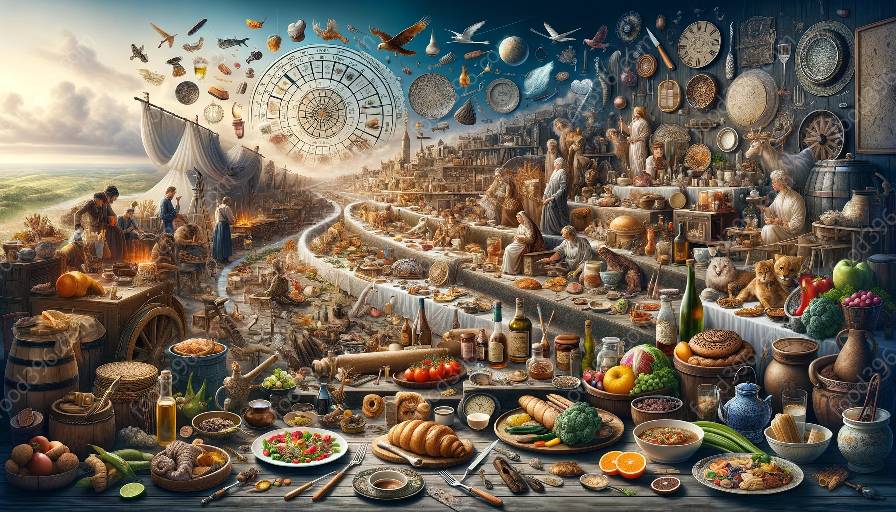Spanish cuisine has a rich history deeply embedded in the country’s diverse landscapes, cultures, and historical events. One such event that significantly impacted Spanish cuisine was the Spanish Civil War. This era brought about immense changes and challenges to the culinary world, shaping the way Spaniards cooked and ate during this tumultuous time. To truly understand Spanish cuisine during the Spanish Civil War, we must explore the context of the war, the impact on traditional foods, and the resilience and adaptation of the Spanish people in the face of adversity.
Context of the Spanish Civil War
The Spanish Civil War, which lasted from 1936 to 1939, was a critical and tumultuous period in Spain’s history. The war was fought between the Republicans, who were loyal to the established Spanish Republic, and the Nationalists, a rebel group led by General Francisco Franco. The conflict was fueled by deep social, economic, and political tensions, ultimately resulting in a devastating and protracted war.
The war had far-reaching consequences for Spain, with the country experiencing widespread destruction, economic instability, and a deep societal divide. Food scarcity, rationing, and hunger became pervasive issues as the conflict disrupted agricultural practices and trade networks. The upheaval brought about profound changes in the daily lives of the Spanish people, including their approach to food and cooking.
Impact on Traditional Foods
The Spanish Civil War had a profound impact on the availability and variety of traditional Spanish foods. With food shortages and rationing becoming a reality for many, staple ingredients such as grains, olive oil, and pulses became increasingly scarce. The scarcity of resources forced people to be resourceful and inventive with their cooking, making the most of whatever ingredients were available.
The disruption in food supplies also led to a decline in the availability of certain foods, including luxury items such as seafood and meat. As a result, daily meals became simpler and more focused on basic sustenance rather than culinary indulgence. Traditional dishes that were once enjoyed by many Spaniards gave way to simpler, more economical meals that could sustain individuals and families during these challenging times.
Furthermore, the war had a significant impact on farming and agriculture, disrupting the production and distribution of essential foodstuffs. Many farmers and agricultural workers were directly affected by the conflict, leading to a decline in the availability of fresh produce and agricultural products. The scarcity of fresh ingredients further contributed to the transformation of Spanish cuisine during the war.
Resilience and Adaptation
Despite the hardships imposed by the war, the Spanish people exhibited resilience and adaptability in their approach to cooking and eating. They found ways to make do with limited resources, often creating simple yet flavorful dishes that relied on ingenuity and creativity. Basic recipes that utilized pantry staples and locally available ingredients became essential in sustaining communities through the hardships of the war.
Moreover, regional variations in cuisine became more pronounced during this period, as different areas of Spain faced unique challenges and had access to varying local resources. The adaptation and improvisation in cooking methods and recipes differed from region to region, showcasing the diversification and creativity of Spanish cuisine during the war.
Additionally, the war spurred a sense of communal support and collective effort in acquiring and sharing food resources. Community kitchens and collective dining initiatives emerged, offering meals to those in need and fostering a spirit of solidarity and support. These initiatives not only provided nourishment to many but also contributed to the preservation of culinary traditions and the communal aspect of dining in Spanish culture.
Legacy and Evolution
The Spanish Civil War left a lasting imprint on the culinary landscape of Spain, influencing and shaping the evolution of Spanish cuisine in the years that followed. The era of scarcity and adaptation during the war prompted lasting changes in cooking methods, ingredient availability, and the cultural significance of food in Spain. While the war brought significant hardships, it also catalyzed innovation and resilience in the realm of Spanish cuisine.
The legacy of the Spanish Civil War continues to be reflected in certain traditional dishes and cooking practices, serving as a reminder of the endurance and adaptability of the Spanish people during a challenging time in their history. Understanding the impact of the war on Spanish cuisine provides a unique perspective on the intricate relationship between historical events and the culinary traditions that define a culture.
Conclusion
Exploring the history of Spanish cuisine during the Spanish Civil War offers a fascinating glimpse into a pivotal period of hardship, adaptation, and resilience. The war precipitated significant changes in the traditional foods, cooking methods, and communal dining practices of the Spanish people. Despite the challenges, the legacy of this era endures, shaping the culinary identity of Spain and serving as a testament to the enduring spirit of its people.
As we reflect on the enduring impact of the Spanish Civil War on Spanish cuisine, we gain a deeper appreciation for the intricate interplay between historical events and the culinary heritage that continues to enrich and define the gastronomic traditions of Spain.

